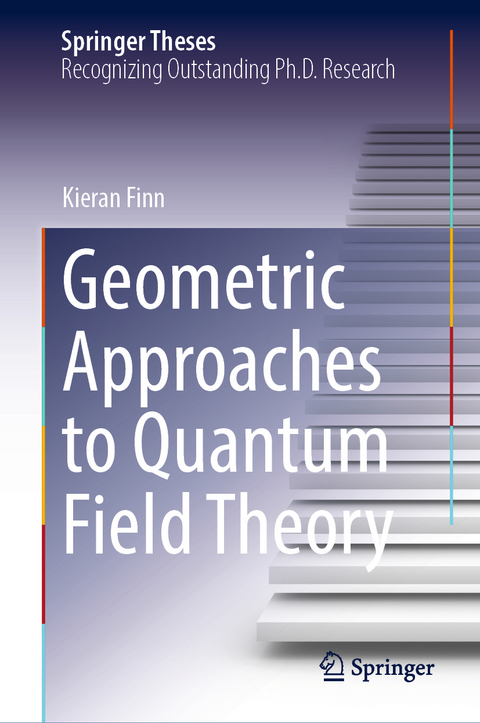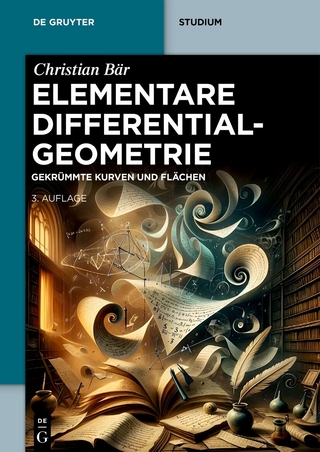
Geometric Approaches to Quantum Field Theory
Springer International Publishing (Verlag)
978-3-030-85268-9 (ISBN)
The ancient Greeks believed that everything in the Universe should be describable in terms of geometry. This thesis takes several steps towards realising this goal by introducing geometric descriptions of systems such as quantum gravity, fermionic particles and the origins of the Universe itself.
The author extends the applicability of previous work by Vilkovisky, DeWitt and others to include theories with spin ½ and spin 2 degrees of freedom. In addition, he introduces a geometric description of the potential term in a quantum field theory through a process known as the Eisenhart lift. Finally, the methods are applied to the theory of inflation, where they show how geometry can help answer a long-standing question about the initial conditions of the Universe.
This publication is aimed at graduate and advanced undergraduate students and provides a pedagogical introduction to the exciting topic of field space covariance and the complete geometrization of quantum field theory.
Kieran Finn studied physics at Oxford University where he specialised in quantum field theory and cosmology, graduating with a first class MPhys degree in 2013. His final thesis, entitled "Using Bayesian Methods to Search for Exoplanets with Planet Hunters", was awarded the Johnson Memorial prize for best thesis in the field of astrophysics. Kieran went on to complete the Perimeter Scholars International program at the Perimeter Institute for Theoretical Physics. During this time, he helped develop the CPT symmetric model of cosmology together with Latham Boyle and Neil Turok. This is a novel theory for the beginning of the Universe in which the Big Bang is considered to be a mirror point between two symmetric universes. This model was published in Physical Review Letters as part of the 'featured in physics' series and later appeared in several international news outlets including CNN, the BBC and New Scientist magazine. In 2014 Kieran was awarded a Fulbright scholarship to continue his studies at New York University. Here he completed research in a diverse range of topics including supernova observations, cosmic rays, and black hole evaporation. However, quantum field theory and cosmology remained his main interests and so, in 2017, Kieran returned to the UK to complete his PhD at the University of Manchester. Under the watchful eye of his supervisor Apostolos Pilaftsis, Kieran published six papers on the use of geometry in quantum field theory and cosmology. The resulting thesis, which was successfully defended in October 2020, is "Geometric Approaches to Quantum Field Theory".
Introduction.- Field Space Covariance.- Frame Covariance in Quantum Gravity.- Field Space Covariance for Fermionic Theories.- The Eisenhart Lift.- Cosmic Inflation.- Geometric Initial Conditions for Inflation.- Conclusions.- Appendices.
| Erscheinungsdatum | 09.10.2021 |
|---|---|
| Reihe/Serie | Springer Theses |
| Zusatzinfo | XIX, 202 p. 7 illus., 6 illus. in color. |
| Verlagsort | Cham |
| Sprache | englisch |
| Maße | 155 x 235 mm |
| Gewicht | 493 g |
| Themenwelt | Mathematik / Informatik ► Mathematik ► Geometrie / Topologie |
| Naturwissenschaften ► Physik / Astronomie ► Atom- / Kern- / Molekularphysik | |
| Naturwissenschaften ► Physik / Astronomie ► Hochenergiephysik / Teilchenphysik | |
| Naturwissenschaften ► Physik / Astronomie ► Quantenphysik | |
| Naturwissenschaften ► Physik / Astronomie ► Relativitätstheorie | |
| Naturwissenschaften ► Physik / Astronomie ► Theoretische Physik | |
| Schlagworte | Cosmological Frame Problem • Cosmology • Field Space • Geometry • Inflation • Initial Conditions • quantum field theory • Quantum Gravity • Supermanifold • Vilkovisky DeWitt |
| ISBN-10 | 3-030-85268-7 / 3030852687 |
| ISBN-13 | 978-3-030-85268-9 / 9783030852689 |
| Zustand | Neuware |
| Haben Sie eine Frage zum Produkt? |
aus dem Bereich


